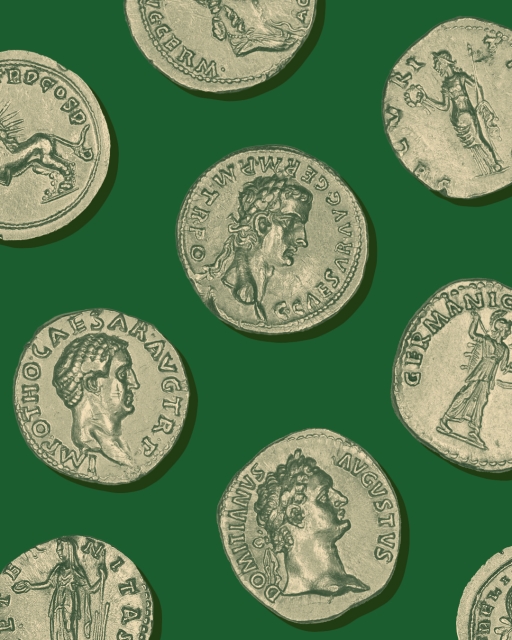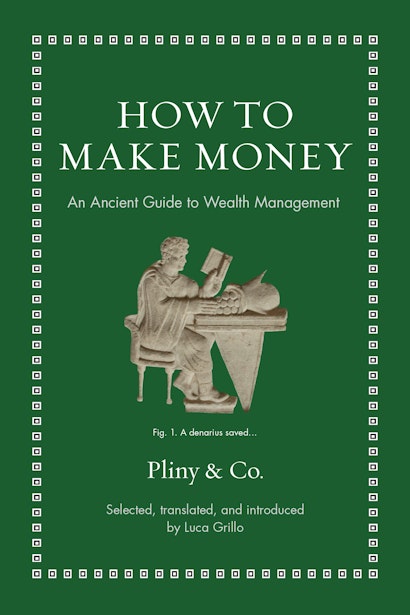To appreciate the influence of the Romans we typically think about language, the alphabet, the calendar or various institutions. And rightly so: more than 50% of English vocabulary and almost 80% of Spanish derive from Latin; the Americas, Europe, Australia and two thirds of Africa have adopted the Latin alphabet as their most common script; more than 168 countries use (a slightly modified version of) the Roman calendar; and the USA, India, Nigeria, Japan, Brazil, and France are just some of more than 60 countries which have a senate—a Roman institution. But what about the economy?
Perhaps the influence of the Roman on modern economies is less visible. But the Romans still affect us for the ways they engaged with the central questions of civilization—democracy versus autocracy, obedience versus rebellion, freedom versus law, rights versus duties, tradition versus innovation, the honorable versus the expedient, individual versus community or risk versus reward.
Encountering the Romans in the marketplace and observing how they made a living allows us to discover how they negotiated these big questions and navigated the challenges of daily life. This encounter throws up similarities to our world: they had companies, with CEOs, employees and shareholders; they crafted detailed contracts, regulated by meticulous laws, which took into account investment risks. They enjoyed an open society, where talented individuals could start out as slaves, buy themselves off, continue to invest successfully and become billionaires. This openness was a source of pride for some, who commemorated their own self-made achievements, and of concern for some others, who scorned parvenus.
Romans liked money and the power that comes with it. Some looked at their financial dealings as a measure of their worth, some preached moderation in reaping interests, while some others, having made millions, took pleasure in giving back to the broader community. As a rule, however, they had strong views about different occupations. Someone once asked Cato about the best investment for one’s estate. “Raising cattle successfully,” he replied. “And what comes second?” “Raising them well enough.” “And third?” “Raising them poorly.” “And fourth?” “Cultivating land.” “But”—added the interlocutor—“what about money-lending?” to which Cato replied, “And what about murdering someone?” (Cic. Off. 2.89). Romans idealized farming as the best occupation and looked with suspicion, or even contempt, at other ventures, however lucrative.
For centuries the Roman economy relied mostly on agriculture. In the early centuries of the Republic, when the economy relied on small subsistence farmers, deciding what to grow and knowing how to do it was a matter of life or death. Choosing wisely meant the difference between managing or failing to support a family. For example, growing vines or olive trees was no doubt more lucrative than growing vegetables, but not everyone could afford the investment. It takes some years for a vineyard or for olive trees to bear fruit, and some farmers were in no position to wait. Those who made the investment, however, to make the most of their small plot, had to know how densely they could plant and how quickly they could grow vines, especially because hastening growth could backfire in the long run. The same principle applies to producing and aging wine. Relying on hard-won knowledge from centuries of subsistence farming, Pliny gave detailed instructions about how to grow vines, and his tips closely resemble practices which are still recommended on the websites of various American Universities.
This agricultural economy was backward. The Romans had conquered an empire by the end of the 3rd century BCE, before developing a money economy and a political structure capable of sustaining it. They had to catch up—which they eventually did. But this bartering backwardness left its mark on the later mindset and vocabulary. To pay soldiers and workers they used to weigh (pendo) a wage (stips), a process called stipendium. Workers could be paid also with a munus (hence, “remuneration”), which originally indicated a “gift” or payment in kind. The Roman mint was related to a temple dedicated to Juno Moneta, and around the time of Augustus and of Jesus some poets started to use moneta as shorthand for “money.” The main Latin word for money, however, remained pecunia, which comes from pecus, “cattle,” and which brings us back full circle to Cato’s best ways to invest: for the Romans money is cattle. English derivatives can be revealing and misleading at once: to us “pecuniary remuneration” is elegant for “money, please;” while to the Romans it signified cattle, a common currency, but one which you can’t put in your pocket and take to the currency exchange.
From the end of the Roman republic commerce thrived. Olive oil, grain, wine, pottery, glass and many other items regularly traveled within the borders of the Roman empire, from Morocco to Armenia, from Iraq to Spain. Beyond its maintenance of a unified political control, the empire promoted a common currency and common laws and regulations, which included low taxes on inter-provincial trade. But commerce thrived outside the borders of the empire as well, and Roman coins have been found in Nigeria, Ghana, China and Scandinavia.
Commerce went along with banking as well. Merchants often bought cargo with loans taken from friends, middlemen or professional bankers. Whoever the lender, special provisions existed for loans on sea cargo, known as “maritime loans.” Maritime loan contracts spelled out the details of the transaction, including the origin and destination of a journey, the interest rates, the deadlines for payments and late fees. In turn, laws regulated controversial cases and established common parameters, including a 25% maximum rate of interest per year. Typically, loans covered the expense for an outward cargo and/or a return cargo with the shipping costs. To obtain a loan, merchants pledged some property (typically the cargo or the ship). Upon reaching the destination and selling the goods, the merchant repaid the loan along with interest, accounted for any other incurred cost and kept the rest as profit. In other words, commerce and finance supported each other, and both flourished.
Commerce and finance offered great rewards and opportunities, which strained Roman traditional ethics. In the middle of a most serious military crisis, two tax collectors looked only for opportunities to profit. They won a public contract for shipping goods to Roman troops engaged on various fronts in the Western Mediterranean. By contract, the state would bear the losses caused by storms. So the tax collectors loaded small and cheap cargo on old ships, sunk them, blamed the shipwreck on an accident and filed for compensation, claiming that their cargo was more valuable than it actually had been. The people discovered the machination; the consul was caught between popular fury and the power of the tax collectors, but the senate sided with the people, and the collectors were exiled.
Other occupations, like renting gladiators, owning prostitutes or selling enslaved individuals, were widespread, legal, lucrative and despised. This loathing was partially due to the awareness that traffickers, such as slave traders, owners of gladiators and pimps, catered to base human desires and made a living by putting another person’s body on sale. These ways to make a living display the tension between Roman morals and greed.
Luca Grillo is the Eli J. and Helen Shaheen Collegiate Professor of Classics at the University of Notre Dame. He is the author of several books, including The Art of Caesar’s “Bellum Civile,” and the coeditor of The Cambridge Companion to the Writings of Julius Caesar.

